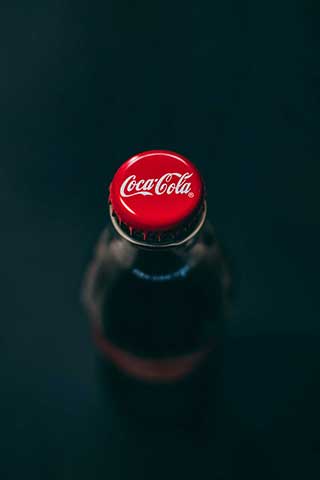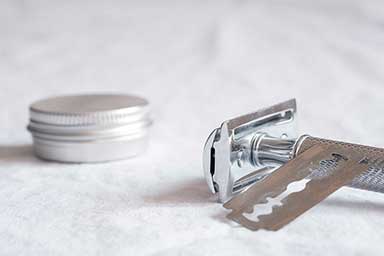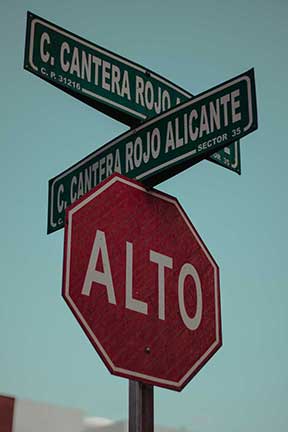Cocaine has seen many uses through thousands of years, with the earliest uses made known through storytelling and ancient inscriptions. Facts and theories about the plant were recorded in early medical journals and the 1885 book titled Über Coca, from the legendary Viennese psychoanalyst Sigmund Freud. He wrote that he initially took it for depression and to ease indigestion, but facts have proven it developed into a 12-year addiction for Freud.
So where does cocaine come from? Cocaine comes from the South American coca plant, and historical facts show leaves from the coca plant have been chewed by the native population for thousands of years as a natural, mild stimulant to suppress thirst, hunger, fatigue, and pain. It also grows in Africa, Taiwan, and Southeast Asia. It grows to a height around eight feet, with straight branches, and leaves with dark-green topsides and bright-green underlinings, similar in appearance to bay leaves.
Up in the mountains of the Andes region, the Incas chewed the leaves to speed breathing in the high altitude and increase their heart rates as they battled fatigue and altitude sickness. People native to Peru viewed the leaves as sacred and only to be used during spiritual rituals. As the Spanish explorers moved into the region, they were enslaved and forced to work the silver mines. Their captors kept them supplied with coca leaves as an energy source. This misuse of the drug has continued into today’s society as an addictive stimulant.
In the second half of the 1800s, botanists and scientists focused on the coca plant extracts, eventually isolating cocaine hydrochloride, a highly addictive stimulant. As it was studied, one scientist realized its numbing effect when he tasted it on his tongue. It was initially used in tonics and was even an ingredient in the first recipes for Coca-Cola®. When travelers brought supplies to towns, cocaine was mixed into elixirs and promoted as supplements for health and vigor.
Later medical uses for cocaine were for topical anesthesia for eye surgeries, which were previously undergone without pain medication.
How Does Someone Use Cocaine?
People develop preferred methods of taking a drug based on how it is used and how quickly they can feel the effects. They use the mouth, nose, veins, and lungs in various ways. Cocaine in powder form is inhaled, or snorted, through the nose or rubbed on the gum line (typically not via the tongue if you remember the earlier reference of its numbing power).
It can be liquified and injected into the bloodstream or inhaled through the lungs with smoking. Powder burning in a spoon from a heat source located below it produces a crackling sound and explains where the term “crack” originated. Cocaine and crack cocaine are the same substance, in different forms.
How Is Cocaine Produced?
Not much was known domestically by the U.S. government about the cultivation of cocaine from the plant, to harvest, to cocaine paste, to cocaine base, to cocaine until the 1990s.
There are many species of coca plants, but only three varieties of two species are used in cocaine production, as detailed in a 1991 federal report published by the U.S. Drug Enforcement Administration (DEA).
And even though cocaine resembles such wholesome-looking ingredients as flour or sugar, you might be shocked to know what you’ve been snorting, injecting, and inhaling. If you knew, you might feel even more moved to never take cocaine again.
What are the main add-ins to the coca plant?
- kerosene
- sulfuric acid
- sodium bicarbonate
- potassium permanganate
- ammonia hydroxide
- ethyl ether
- acetone
- hydrochloric acid
Kinda makes you want to slowly whistle in astonishment, doesn’t it? It makes the old commercial that depicted the fried egg in the skillet as “your brain on drugs” a little more believable.
Common other names:
- blow
- coke
- crack
- rock
- snow
What Is a Cocaine High Like?
Cocaine reacts in a relatively short time, with a “high” appearing nearly immediately and lasting for a few minutes or about a half-hour. The method of use causes a high to last for different lengths of time.
People have described different experiences, most commonly one of alertness, heightened senses which can increase sexual arousal response, and generally feeling happy. Others find it hard to process information or to complete manual tasks. Still, others get agitated and experience paranoia or act bizarrely, become violent, or develop an unknown reason for distrust.
Cocaine’s effects appear right away and will last for about 10-30 minutes depending on how it was used. Generally, the quicker feeling of a high received nasally has the shortest-lasting result, followed by injecting or smoking cocaine.
Signs Someone May Be Taking Cocaine
Visible physical signs, telltale behavioral changes, and unexplained paraphernalia can help you begin to gather a picture if someone you love may be using cocaine. If you come across the following in their car, home, or on their person, you might want to look at them a little closer as they could be signs of cocaine use. Have you come across steel wool, lighters, spoons, syringes, razor blades, rolled dollar bills, cut-off straws, or mini baggies?
If the answer is yes, look closer. Behaviorally, you may notice mood swings, stealing money or personal property, and poor hygiene.
Physical signs might include burn marks on lips or fingers, runny or bloody nose, dilated pupils, significant weight loss, nausea, shaking, or elevated heart rate.
Cocaine Lacing Common To Save Dealers Costs or To Hook People
To keep revenue high for dealers, long-time tactics to dilute cocaine with other powders similar in appearances like baking soda or talcum powder have been used. Fentanyl lacing, a synthetic opioid, is also growing to encourage customers to return to this highly addictive drug.
There is no way for the person taking the cocaine to know if it is pure or has been mishandled. You do not know which version you are buying and ingesting into your body until you use it. This is a dangerous trust that can result in addiction, overdose, and death.
An overdose, whether intentional or not, happens when serious, life-threatening effects occur. This could even result from the first dose if the amount is excessive or has other elements mixed into a dangerous combination. Adding alcohol to the equation increases the chances of overdose.
From Crack Cartels To Arizona, Cocaine Facts of Supply and Demand
If you’re of a certain age or into trivia you may remember Medellín Cartel founder Pablo Escobar, who pumped cocaine into the United States until he died in 1993. It is estimated the cartel made half a billion dollars a week in the mid-1980s and supplied 80% of the world’s cocaine by 1990.
As cartel after cartel replaced each other, and law enforcement continued the hunt, the Mexican Sinaloa Cartel, led by El Chapo (real name Joaquín Guzmán), rose to the top. His escapades are legendary with his prison escape forever captured on video. He was rearrested in 2016, with family and cartel lieutenants battling for control while staving off attacks from outside cartels. And the cocaine continues to come in, whether via cargo ship, open construction “panga” boats or pseudo subs, continuously monitored in the Pacific in an area the size of the United States’ mainland, as smugglers constantly attempt to skirt interceptors like the U.S. Coast Guard.
Production amped up in Columbia by 134% between 2013 and 2016, after hitting a low in 2012, according to a 2017 Business Insider magazine article.
That period also saw the two largest year-over-year increases in cultivation ever in Colombia—a 39% rise in 2014 and a 42% increase in 2015.
Changing Approach From Criminal Prosecution To Treatment for Substance Use Disorders
Law enforcement may be needed for violent drug dealers, but people who become addicted benefit from a more holistic approach to addiction treatment.
This has been touted by former Colombia president César Gaviria, elected in 1989, who said to Business Insider, “Taking a hard line against criminals is always popular for politicians. I was also seduced into taking a tough stance on drugs during my time as president,” he added. “We started making positive impacts only when we changed tack, designating drugs as a social problem and not a military one.”
This approach of turning the page away from incarceration toward treatment has been becoming more popular stateside as well, first with marijuana being allowed in many states.
Most recently, the 2020 primary election saw Oregon become the first state to decriminalize personal possession amounts for drugs including cocaine, heroin, and methamphetamine. Instead, they will be subject to a $100 civil fine that would be waived if they choose help by a health assessment. The manufacturing and selling of drugs remains illegal.
Removing the mystery can remove the taboo of something, perhaps even making it less appealing. Stigma for addiction treatment can also be removed by this approach.
Arizona Cocaine Use
In the United States, 1.9 million people are estimated to be using cocaine, according to the Drug Policy Alliance. That is 0.8% of the overall population.
There are approximately 6.3 million Arizonians 18 years old and above, and 102,000 have used cocaine in a one-year period, according to the Substance Use and Mental Health Services Administration’s (SAMHSA) 2012 National Survey on Drug Use and Health. That statistic is just under 25% of all people who had taken illicit drugs.
The U.S. Department of Justice Drug Enforcement Administration corroborates these concerns, classifying it as moderate, or accessible, based on reports from its Phoenix field division office. Across the country, a 2019 National Drug Threat Assessment called cocaine “a resurgent threat in the United States as domestic indicators—such as seizures, availability, and overdose deaths—remain at elevated levels.
Cocaine-involved overdose deaths continue to exceed established benchmarks, primarily due to the continued spread of fentanyl into the cocaine supply. In addition, coca cultivation and cocaine production in Colombia, the primary source of supply for cocaine in the United States, remain at high levels.”
How Does Cocaine Interact With the Body?
If you think about your brain as the major communication hub it is, dopamine is the natural chemical messenger, “the local postal carrier,” if you will. The mail is full of happy, regulated thoughts and delivers messages to nerve cells. Once these thoughts are delivered to the next nerve cell, the mailman heads back to home base.
But the cocaine closed off the door for dopamine to return, causing a back-up between the cells, essentially flooding your system with reward messages. This repeated use disrupts the normal mail route, or established pattern of dopamine communication, and causes the brain to malfunction.
Addiction Occurs With Persistent Need To Stay High
Cocaine is a highly addictive stimulant. Because its “high” is relatively short-lived, someone taking it begins to take it more often to keep the feeling going. Eventually, tolerance builds as the brain makes automatic adjustments within its dopamine production. Higher doses to achieve the same results are the next step in the addiction process.
If dopamine boosts via cocaine cease to exist, withdrawal sets in during this out-of-whack cycle your brain adjusts to. People either feed the brain through the cocaine-created dopamine or will undergo symptoms of cocaine withdrawal until the body can regulate itself.
The brain is constantly jockeying to make adjustments when patterns are interrupted and can resume a normal course with time and support for the person who chooses treatment.
Most people will benefit from treatment for cocaine addiction at a recovery center that can teach them other ways to approach healthy living in a safe environment.
Long-Term Health Effects of Cocaine
When considering quitting cocaine use, the general consensus is “the sooner the better” with regard to improving someone’s long-term health.
Cocaine side effects can vary depending on the method of use. If you’ve snorted it, you could have issues along the nasal passages such as loss of sense of smell, nosebleeds, problems swallowing, runny nose, and throat hoarseness.
If you’ve smoked it, the lungs may be damaged, and asthma is more pronounced. The World Health Organization also announced that side effects from COVID-19 could be more dangerous with preexisting pulmonary issues.
Using needles puts you more at risk of infectious diseases such as HIV and hepatitis C, which can cause chronic health complications.
Other health effects include:
- gastrointestinal issues due to reduced blood flow
- loss of appetite, causing significant weight loss or malnourishment
- heart damage
- increased risk of stroke or seizure
- neurological problems from brain bleeding, increased risk for Parkinson’s disease
- cognitive impairment to impulse control, memory, decision-making, and performing motor tasks
Withdrawal Symptoms Can Be Eased in a Detox Program
Cocaine addiction will have some similar side effects as other drugs and attempting to withdraw without medical supervision can be dangerous. A detox center that can follow up with treatment programs for recovery is an invaluable step to a strong approach to sobriety.
Immediate withdrawal symptoms include:
- depression
- irritability
- mood swings
- fatigue
- hunger
- tremors
- intense cocaine cravings
- nightmares or sleep disturbances
- concentration issues
Attempting to withdraw from cocaine without medical supervision can be dangerous. It is important to always seek assistance by visiting a medical professional or detox center when struggling with substance use, including cocaine addiction.
Important To Remove Addiction Stigma
Feeling failure and shame are part of the stigma of addiction and treatment, which leads to hesitations for many. That is a sad, but too-often-true, statement that can stop someone from seeking treatment.
Addiction permeates all demographics: a young man honorably discharged from the Air Force, a female corporate attorney in her 30s, a guy in a fancy house, a homeless runaway, the youth basketball coach, and the hippie girl who sings in a band.
These are the people you love or how society sees you. Addiction really is everywhere, but rarely discussed.
Robert Downey Jr. and Drew Barrymore are famous actors who have been upfront about their cocaine use. Look, this drug touches all walks of life. Some people choose to be private, but as more people speak out the stigma can end, and treatment can be celebrated.
Pinnacle Peak Recovery Can Help
The good news is that there’s help available to you. An inpatient treatment center is an excellent option for someone with one—or multiple—addictions. We offer clinical excellence, compassionate care, and a warm family-like environment where you can recover comfortably.
Treatments focus on helping you overcome cravings and relearn how to live without drug use.
Below are a few modalities that we use at Pinnacle Peak Recovery:
- One-on-one talk therapy delivers evidence-based treatments to help you get to the reasons for using in the first place.
- Group therapy encourages you to learn from others in recovery and develop a relapse prevention mindset.
- Dual diagnosis assessments and appropriate treatments help you to overcome mental health challenges alongside an addiction.
- Yoga therapy meets your low-impact exercise needs while triggering natural dopamine release.
- Holistic treatments provide you with stress relief tools that counteract the need to use again.
Get Help Now
We are here to help you through every aspect of recovery. Let us call you to learn more about our treatment options. If you’re struggling with an addiction, help is available. Even if you’re worried that you might also have a co-occurring disorder, you don’t have to continue suffering.
During your visit, a treatment center intake counselor will do a full assessment of you or your loved one’s medical and substance use history to determine if there is more than one disorder to treat. If this is the case, a complete program will address both, independently and together, so a full recovery can be achieved and better preparations made for situations that could trigger a relapse.
The friendly therapists at Pinnacle Peak Recovery routinely work with people just like you, and we love being able to help our client family overcome substance use disorder. Call 866-377-4761 today to talk to an intake counselor.










